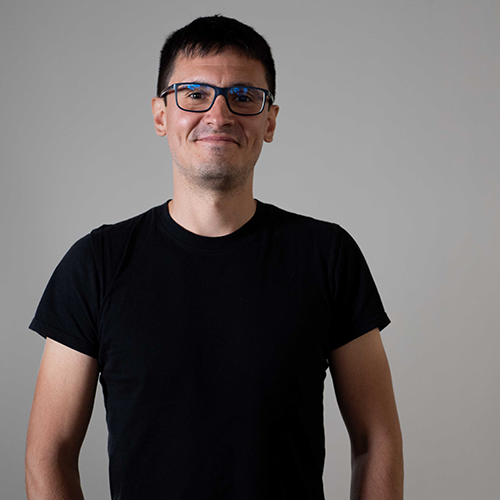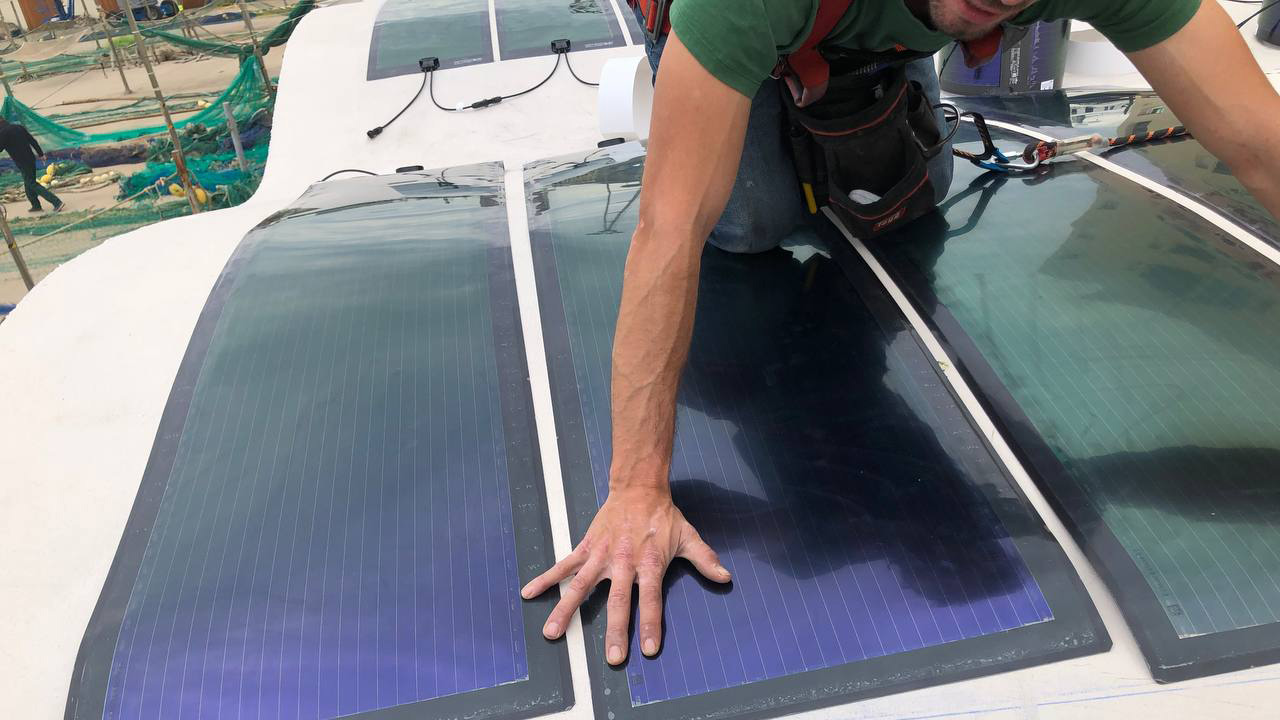Acció 2023 Internationalization Programme: opening market in Ivory Coast
Acció's Internationalization Programme of the Generalitat de Catalunya: A Look at Ivory Coast
At the end of July 2023, for the second consecutive year, we have concluded our internationalization project of the Action Program of the Generalitat de Catalunya. A step forward that highlights our commitment to sustainability and energy efficiency beyond our borders.
Why Côte d’Ivoire? With the invaluable support of the Acció team, we chose to continue working in Côte d’Ivoire as a strategic destination. Our desire? Bring our photovoltaic solutions to this region, providing a sustainable alternative for its growing energy demand.
Our key objectives in Côte d’Ivoire include:
- Market Prospecting: Identify the business sectors with the greatest potential to integrate solar solutions, thus contributing to reducing their energy costs.
- Local Collaboration: Find local sales agents, ensuring that our solutions are tailored to the specific needs of the Ivorian market.
- Funding and Support: Explore grant programs and other local funding opportunities that facilitate the implementation of solar projects.
This day has led us to connect with a total of 25 companies in this region, with whom we had the opportunity to hold face-to-face meetings, thanks to a detailed agenda of visits organized in Abidjan on July 11 and 12.
Final thoughts Although the expected duration of the project was 4 months, our stay was extended in order to deepen the understanding of the Ivorian market. What we have learned gives us a detailed overview of local energy needs and the challenges faced by businesses in this area.
Now, with this experience in hand, we continue to work passionately to drive solar transformation in Côte d’Ivoire. We are convinced that photovoltaic solutions can play a crucial role in this nation’s energy future.
If you want to know more about our projects and our vision for a greener world, keep discovering our projects.

Solar Energy for Hospitals & Biomedical Research Centres in Sub-Saharan Africa: When does it make sense?
Solar energy has been growing exponentially worldwide due to its numerous advantages and ability to meet the demands of a growing population. In Sub-Saharan Africa, the need for reliable power in hospitals and biomedical research centres has become increasingly crucial. This article will explore the reasons behind this need, the benefits of solar energy, and the optimal conditions for implementing solar photovoltaic (PV) systems, battery energy storage solutions (BESS), PV + diesel hybrid systems, and solar-powered medical oxygen production.
Why Hospitals and Biomedical Research Centres?
Hospitals and biomedical research centres play a vital role in the health and well-being of people in Sub-Saharan Africa. They are responsible for providing critical medical care, conducting life-saving research, and creating a sustainable healthcare infrastructure. As such, they require continuous, reliable, and efficient power to run their operations and support their mission.
The Need for a Reliable Power Supply
The lack of a reliable power supply in Sub-Saharan Africa poses significant challenges to hospitals and research centres. Frequent power outages disrupt essential services, equipment, and research. This can lead to the loss of valuable data, life-threatening delays in care, and increased operational costs. The need for a stable and efficient energy source is essential in addressing these challenges and ensuring the effective functioning of healthcare institutions.
The Benefits of Solar Energy
Solar energy offers several benefits for hospitals and biomedical research centres in Sub-Saharan Africa:
- Reliability: Solar energy systems can provide a stable and continuous power supply, reducing the risk of outages and minimizing disruptions to services and research.
- Cost-effectiveness: Solar energy systems have significantly reduced in cost over the past decade. This makes it more affordable for healthcare institutions to invest in solar power.
- Sustainability: Solar energy is a clean, renewable resource that can help reduce greenhouse gas emissions and promote environmentally friendly practices.
- Scalability: Solar energy systems can be easily expanded to meet the growing demands of hospitals and research centres.
When to add Solar PV?
It is important to consider the following factors when deciding when to add solar PV to hospitals and research centres:
- Location: Areas with abundant sunshine and minimal shading are ideal for solar PV installations.
- Energy demand: Understanding the energy consumption patterns of the institution will help determine the appropriate size of the solar PV system.
- Available space: The facility must have enough space for the installation of solar panels and related equipment.
Financial incentives: Governments and organizations may offer incentives, grants, or tax credits for the installation of solar PV systems, making it more affordable. Ask us more to find out current financing opportunities.
When to add Battery Storage?
Battery storage is useful when:
- Grid instability is prevalent, and backup power is crucial for maintaining essential services and research activities.
- Energy demand fluctuates throughout the day, and the stored energy can be used during peak demand periods.
- There are plans to expand the solar PV system in the future, and additional storage capacity will be needed.
Types of Battery Energy Storage Solutions (BESS)
Different chemistries of battery energy storage solutions can be used for hospitals and research centres, including:
- Lead-acid batteries: These are a cost-effective option but have a shorter lifespan and lower energy density compared to other battery types.
- Lithium-ion batteries: They offer a higher energy density, longer lifespan, and better performance but come at a higher cost.
- Flow batteries: These batteries are well-suited for large-scale energy storage and can provide longer discharge durations, but they are more complex and expensive than other options.
Hybridation with the Utility Grid and/or Existing Diesel Gensets
Integrating solar PV systems with the utility grid and/or existing diesel gensets allows for a more stable and flexible power supply. Hybrid systems can optimize energy generation and consumption, reducing reliance on diesel fuel and lowering operational costs. These systems can be designed to prioritize solar power, using grid electricity or diesel generators only when necessary.

Additional uses: Solar Energy for the Production of Medical Oxygen
Medical oxygen is essential in hospitals for various treatments and procedures. In many Sub-Saharan African hospitals, oxygen supplies can be unreliable and costly. Solar energy can be used to power medical oxygen production systems, providing a sustainable and cost-effective solution. By harnessing the sun’s energy, hospitals can produce their own oxygen, reducing dependency on external suppliers and ensuring a steady supply for critical healthcare needs.
Solar energy presents a promising solution for hospitals and biomedical research centres in Sub-Saharan Africa, offering a reliable, cost-effective, and sustainable power source.
Assessing the specific needs and circumstances of each institution is crucial in determining the optimal time and method for implementing a solar PV system with or without battery storage or hybridizing with the utility grid or with a genset. By embracing solar energy, healthcare institutions can overcome the challenges of unreliable power supplies and contribute to the long-term development of the region’s healthcare infrastructure.
Are you ready to explore the potential of solar energy for your hospital or biomedical research centre in Sub-Saharan Africa? Our team of experts is here to help you assess your needs, design the optimal solution, and provide a techno-economic proposal.
Contact us today to start your journey towards a more reliable, sustainable, and cost-effective energy future!

Marcos Morales
Head of Commercial & International Projects
Azimut World
marcos.morales@azimut360.coop
Bouaké: from energy poverty to health
From energy poverty to Health care: the role of renewable energy in improving healthcare in Bouaké.
As part of the ongoing efforts to address the challenges posed by the COVID-19 pandemic and the global climate emergency, the #KotiakróA360 project has been launched. This project is being led by our engineer, Maria Vivancos, and has received funding from the Catalan Agency for Development Cooperation (ACCD). The primary goal of this initiative is to enhance the provision of healthcare services at the Health Center and Maternity Ward located in the Kottiakoffikro neighbourhood of Bouaké city in Ivory Coast.
During the intervention in the area, a photovoltaic generation system has been implemented, which has ensured the availability of electricity 24 hours a day and improved the energy efficiency of the impacted center. It should be noted that in many areas of Africa, the general electricity network is unstable and causes frequent power outages.
This often results in hospitals or health centers being left in the dark while consultations, surgeries, etc. are being carried out, or medical equipment deteriorating due to poor quality of the network.
Additionally, the intervened infrastructure benefits from energy savings by consuming less energy from the grid.
The implementation of solar panels enables the stabilization of electrical supply and ensures its availability, which provides a substantial improvement in the service and provision of healthcare, as well as the lifespan of medical equipment, by minimizing network failures.
In the first phase of the project, our project manager and engineer worked with local technicians to install a photovoltaic system that ensured the availability of locally-produced electrical energy from renewable sources. During the process, the technicians were trained in maintaining the solar plant, promoting maximum local autonomy possible. Moreover, this installation has also enabled the availability of locally-produced medical oxygen with concentrators.
Oxygen is an essential medicine for the management of childbirth and the treatment of childhood illnesses such as pneumonia, malaria, or sepsis, which are prevalent in the intervention area. Furthermore, with the COVID-19 pandemic, oxygen became even more critical for health centers and hospitals such as Kotiakró, which was designated by the Ministry of Health as a center for the isolation and treatment of COVID-19 patients. At that time, during the pandemic, it was anticipated that, while the majority of treated patients presented mild symptoms, 14% would require oxygen in the hospital, and 5% would require mechanical ventilation in intensive care. Therefore, the availability of medical oxygen became a vital issue to ensure the health and well-being of the population.
The installation of 3 concentrators has allowed the hospital to have guaranteed access to medical oxygen 24 hours a day, 7 days a week, in order to meet the needs for medical oxygen, which were previously not guaranteed.
As explained by Eugène Kra Kouassi, President of AIP, and Assé Kouadio Innocent, Director of the Pediatrics Department at the CHU (University Hospital Center), in the documentary you can watch, prior to the intervention, there were no public hospitals in the area that could administer continuous oxygen. Before the project, the only healthcare center in the city with oxygen availability was the CHU. However, the supply was not guaranteed, as it was provided through cylinders that were filled at centralized plants in Abiyán, which is a 5-hour drive from Bouaké.
Indeed, due to the lack of availability of continuous oxygen supply in Bouaké, patients would have to be transferred to the hospital in Yamoussoukro. Therefore, it was deemed necessary to find alternatives for the supply of medical oxygen in Bouaké.
If someone outside the city needed this treatment, they often had to travel more than 40 km to reach the CHU in Bouaké. Many times they arrived and there was no oxygen available in the cylinders.
In addition to the installation of the oxygen concentrators, technical and healthcare personnel were trained on the proper use of the equipment and improved patient care. The project not only includes the technical aspects related to the installations, but also aims to approach healthcare and health improvement through the sensibilisation of the local population near the Kotiakró Health Center, through the training of women’s groups in different villages and neighborhoods.
Throughout the different phases of the project, informative sessions on sexual and maternal-infant rights have been carried out with the aim of improving women’s health and the overall health of the community. These sessions provide knowledge and tools to promote sexual health from a rights-based approach focused on the well-being of individuals.
We work on projects like this because we believe that access to energy improves access to other rights such as the right to good healthcare or the right to education. Although the intervention in the area has already been completed, we are waiting to obtain results and assess the impact of the project on improving healthcare, both in terms of equipment, healthcare personnel, and beneficiaries.

Maria Vivancos
Head of Cooperation & Oxygen Area
Azimut World
maria.vivancos@azimut360.coop
Flexible solar panels make better use of space
Flexible solar panels make better use of space. An innovative installation at the Moll de pescadors in the Port of Barcelona.
A few weeks ago, one of the most innovative photovoltaic installations in the city was presented at the Port of Barcelona. The installation carried out on the Moll de Pescadors is part of the LIVE BIVP (Building-integrated Photovoltaics) project coordinated by COMSA and co-financed by the European LIFE programme.
29.5kWp have been installed with the aim of demonstrating solutions to integrate photovoltaic modules in buildings with complex roofs and promote the generation of clean energy in all types of structures and buildings.
Our installers have assembled 584 solar panels with peculiar characteristics: they are made of a lightweight, flexible organic material that is easy to install. These innovative solar panels have been developed by the German company Heliatek and it is estimated that, by the end of the year, they will produce 43.4 MWh of electricity.
The solar panels used in this project are substantially different from the panels commonly used in photovoltaic installations. Heliasol is the prototype that the German company is working on and it is a model of flexible solar panel with adhesive layer on its back.
In this way, the materials used for manufacturing, as well as their lightness, allow users to reduce the amounts of materials required for assembly.
The technology of flexible panel without a rigid frame, allows them to adhere directly to the roof without the need for the entire structure that would typically be required. In addition, it allows you to adapt to different types of structure. In the case of the Moll de Pesacadors project, the roof has an oval shape, which makes this panel model better suited than a usual rigid crystalline silicon panel with a rigid aluminium frame.
In addition, although a regular panel with its life cycle analysis usually involves an emission of gases of around 40 or 50gCO2 equivalent for each kWh generated, the flexible panels installed their emissions fall below 10gCO2. The organic materials used for their manufacture, and not using elements of the so-called rare earths, mean a reduction in the environmental impact of this technology.
However, the cell itself has an efficiency of around 7%, unlike the commonly installed monocrystalline silicon panels that are around 20%. Despite the current limitations, it is a technology that over the years will improve efficiency and provide multiple uses.



